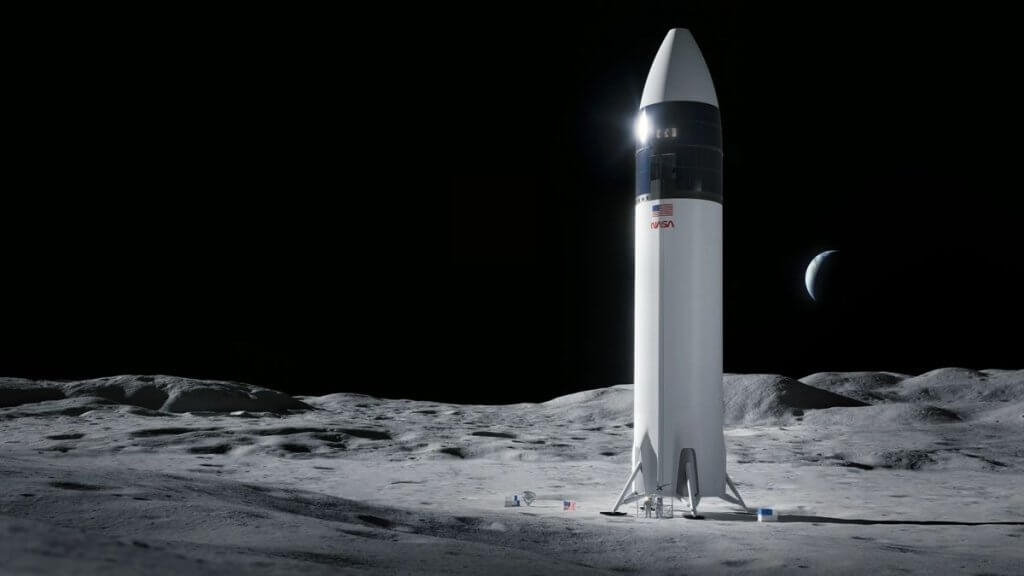
NASA’s Artemis 3 astronaut moon landing unlikely before 2027, GAO report finds (Image Credit: Space.com)
The Artemis 3 mission, which is now tentatively scheduled to fly in December 2025, may have to wait until at least 2027.
NASA’s endeavor to return humans to the moon for the first time since the Apollo program with the Artemis 3 mission will likely be delayed because it is jeopardized by “multiple challenges” and an ambitious schedule, the U.S. Government Accountability Office announced Thursday (Nov. 30).
Based on interviews with NASA and industry officials and reviewing documentation, the GAO reported it found a significant amount of pending technical work on the human landing system or HLS, a variant of SpaceX’s Starship and NASA’s mode of transport to the moon’s surface. Also remaining is crucial design work to incorporate larger oxygen tanks into the space suits that would be used by astronauts on the moon, the report stated.
Related: SpaceX Starship problems likely to delay Artemis 3 moon mission to 2026, NASA says
The HLS will use up its propellant reservoir just getting into orbit, so it will need to be refueled before heading to the moon. As per the current plan, a multi-step effort would see a Starship fuel depot placed in orbit first, followed by multiple tankers to transfer methane and liquid oxygen into that depot so that it is fully refueled before going to the moon.
Headquartered at the Marshall Space Flight Center in Alabama, the HLS program is still officially working toward a December 2025 launch, and aiming to complete its development in a total of 79 months — about a year sooner than the average for major NASA projects, most of which don’t involve human spaceflight. But GAO says that timeline is unlikely since complex technical work remains, including figuring out how to transfer propellant in orbit for which “SpaceX has made limited progress in maturing those technologies.”
The HLS program and SpaceX have delayed eight out of 13 key milestones by six months to a year, causing two of the postponed milestones to now take place in 2025, the same year as the currently scheduled Artemis 3 launch. If the HLS lander development takes on average as much time as other major projects at NASA, the Artemis 3 mission would occur in early 2027, the report stated.
For that launch timeline to be met though, a second pressing concern related to a design change in space suits being developed by Axiom Space must be resolved. Earlier this year, the company unveiled a prototype of the suit, which it would rent to NASA for the Artemis moon landing missions. So far, Axiom has completed two milestones in work related to developing the space suits but they are still in the early development phases, the latest GAO report said.
Much of the pending work appears to be related to the suit design. NASA requires Axiom to develop a suit that can provide 60 minutes of emergency life support, but “NASA’s original design did not provide the minimum amount of emergency life support needed for the Artemis 3 mission,” according to the report.
So Axiom now plans to rearrange components of the space suit such that it can accommodate larger oxygen tanks but if that’s not possible, it will need to alter the current design which would take more time.
If NASA officially delays the launch date for Artemis 3 to 2027, it would end up being one year sooner than its original goal of 2028. The Trump administration in 2019 had set a timeline of 2024, which NASA eventually pushed out to the current launch estimate in December 2025.
But even NASA found that 2025 date to be optimistic; in June 2023, agency leadership pointed out that delays with HLS/Starship development made it unlikely that Artemis 3 would be able to meet that timeline.





